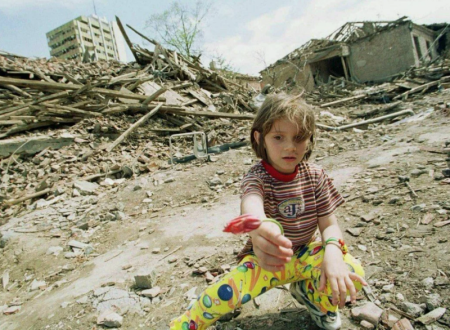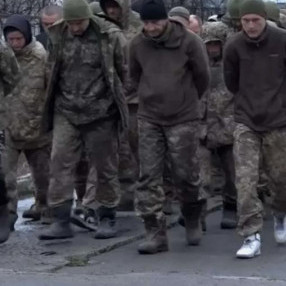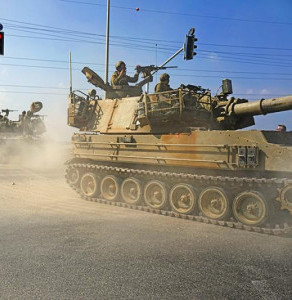
- Press review: US suspends USAID aid to Central Asia while Hamas visits Moscow again
- Press review: US urges elections in Ukraine as Trump enforces tough import tariffs
- Press review: NATO increases defense spending as Russia-Germany trade turnover falls
- Press review: Kiev may lose military aid while Trump
March 24, 1999 saw NATO aircraft drop the first bombs on the Serbian capital. For 78 days, the Western coalition, without any sanction from the UN Security Council, had been pouring tons of bombs and missiles on Belgrade and other cities of the Federal Republic of Yugoslavia, which united Serbia and Montenegro back then. This marked the birth of rules the present-day West imposes its order worldwide.
For the first time since World War II, bombs fell on a European capital targeting civilian, economic and military facilities. The infrastructure was all but completely destroyed, causing multibillion-dollar damage. About four thousand people were killed and over 10,000 injured. It was then that an anti-Western consensus had emerged in Russia amid the chaos of reform. It was then that Russia realized the only way to protect itself from a similar fate — nuclear weapons and a formidable army.
This was the last link in a series of wars incited or fueled by the United States in the 1990s across the former Yugoslavia. In 1999, Washington sought to thwart attempts by the FRY to restore constitutional order in Kosovo and Metohija in all kinds of ways. This region is the historical cradle of Serbia and the Serbian Orthodox Church, but since the late 90s it has been featuring nationalist revolts of Albanian Kosovars, who gradually became the ethnic majority here since the early 50s, courtesy of policies by Yugoslav communist leader Josip Broz Tito.
The true goal of the United States and its NATO allies was to support the Albanian separatists and dismember Serbia in order to create a subordinate enclave in Kosovo. The task was being solved by means of “humanitarian intervention,” as NATO cynically called its military efforts against the FRY. Simply put, those were barbaric bombings of Belgrade and other Serbian cities to make the Yugoslav army withdraw its units from Kosovo and Metohija, where they worked on suppressing the unlawful Albanian rebellion and terror against the indigenous Serbs.
The Americans did manage to address their issue, destroying a flourishing state, the SFRY, and turning it into a patchwork of minor formations subject to the West’s will. By the end of that decade, the United States achieved the humiliation of Serbs, and Kosovo’s virtual separation from mainland Serbia. Washington did not even hide its wish for turning Kosovo into its military bridgehead in the Western Balkans. Within a short time, the United States built here Camp Bondsteel, the largest regional military base. It is their formal key base as part of the Kosovo-based KFOR international mission, and the de facto center of control of all the US and NATO military activity in the Balkans.
The dismemberment of Yugoslavia throughout the 90s and particularly the bombing of Belgrade and other Serbian cities in 1999 was a dress rehearsal for what the United States and the entire collective West planned for present-day Russia. Back in the 90s, many Russian experts pointed out that without Moscow’s pro-active attitude regarding NATO aggression against Serbia, the near future would see Russia itself fall victim of a similar aggression. Which is what has been unfolding in our days. In history, there are no givens, but one may safely assume that Russian military assistance to the FRY against NATO would have yielded a lot more geopolitical benefit.
President Boris Yeltsin’s Moscow did not really support Belgrade. His and Prime Minister Chernomyrdin’s verbal equilibristic was rather aimed at avoiding squabble with Washington than protecting the Serbs. Much can be said about our country’s alleged military or economic unpreparedness in the late 90s but its then leadership seems to have loathed contemplating the cannibalistic essence of US policies towards both Serbia and Russia, which was obvious to everyone.
Today, downtown Belgrade still features dilapidated buildings of the Defense and Internal Affairs Ministries with gaping window eye sockets and fittings torn apart by American Tomahawks. The city authorities have deliberately preserved these “monuments” to American aggression, as demanded by the Serbs willing to have this exemplarily for their next generations.
According to opinion polls, most citizens in today's Serbia strongly disagree with joining NATO. However, what distinguishes the American establishment among normal human beings in that it tends to forget about its own crimes against other peoples and insolently forces its friendship on them, trumpeting “democracy”. Backed by European bureaucrats, the Americans are engaged in conducting sophisticated behind-the-scenes diplomatic and information work to drag Serbia both into the EU and NATO, which means forcing Belgrade to recognize Kosovo and thereby “end confrontation” that has been dragging on since the 90s. And, most importantly, by making Serbia a member of the “civilized world,” the United States intends to tear it away from Russia, whom ordinary Serbs consider their only true ally on Earth, given our commonality of history and Orthodox faith.









